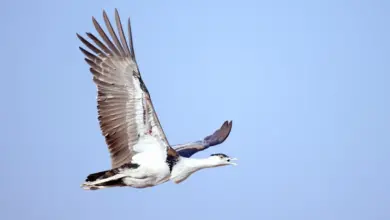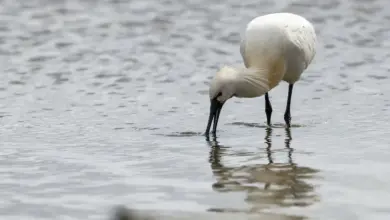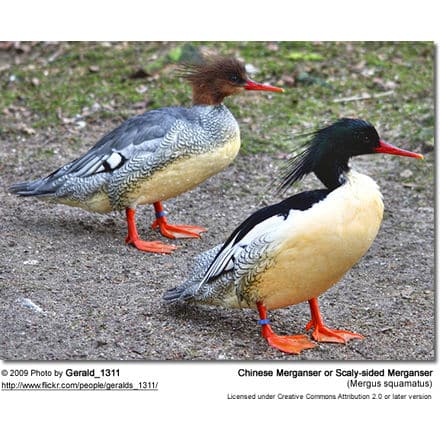Sooty Shearwater
The Sooty Shearwater (Puffinus griseus) is a medium-large shearwater in the seabird family Procellariidae. In New Zealand it is also known by its Māori name tītī and as “muttonbird“, like its relatives the Wedge-tailed Shearwater (P. pacificus) and the Australian Short-tailed Shearwater (P. tenuirostris).
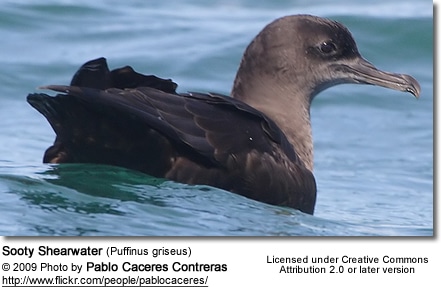
It appears to be particularly closely related to the Great (“P.” gravis) and Short-tailed Shearwaters, all blunt-tailed, black-billed species, but its precise relationships are obscure. In any case, these three species are among the larger species of shearwater which might belong into a separate genus Ardenna.
Description
Sooty Shearwater are 40-51 cm in length with a 94-19 cm wingspan.
It has the typically “shearing” flight of the genus, dipping from side to side on stiff wings with few wing beats, the wingtips almost touching the water. Its flight is powerful and direct, with wings held stiff and straight, giving the impression of a very small albatross.
This shearwater is identifiable by its dark plumage which is responsible for its name. In poor viewing conditions it looks all black, but in good light it shows as dark chocolate-brown a silvery strip along the center of the underwing.
Usually loud, Sooty Shearwaters coo and croak while on the breeding grounds.
In the Atlantic, it is the only such bird, whereas in the Pacific part of its range, other all-dark large shearwaters are found. Particularly the Short-tailed Shearwater is almost impossible to tell apart from the present species at a distance.
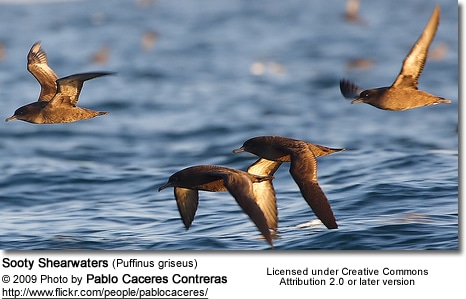
Distribution and movements
Sooty Shearwaters breed on small islands in the south Pacific and south Atlantic Oceans, mainly around New Zealand, the Falkland Islands, Tierra del Fuego and also in the Auckland Islands.
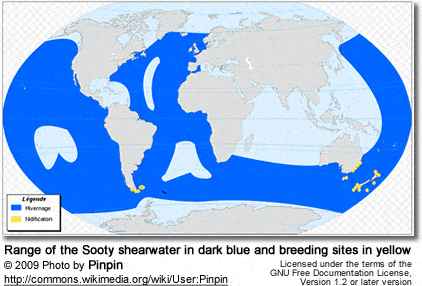
They are spectacular long-distance migrants, following a circular route, traveling north up the western side of the Pacific and Atlantic Oceans at the end of the nesting season in March-May, reaching sub Arctic waters in June-July where they cross from west to east, then returning south down the eastern side of the oceans in September-October, reaching to the breeding colonies in November.
They do not migrate as a flock, but rather as single individuals, associating only opportunistically; in June 1906 for example, two were shot near Guadalupe Island off Baja California (Mexico), several weeks before the bulk of the population would pass by.
Likewise, the identity of numerous large dark shearwaters observed in October 2004 off Kwajalein in the Marshall Islands remains enigmatic; they might have been either Sooty or Short-tailed Shearwaters, but neither species is generally held to pass through this region at that time.
In the Atlantic Ocean, they cover distances in excess of 14,000 km (9,000 miles) from their breeding colony on the Falkland Islands (52°S 60°W) north to 60° to 70°N in the North Atlantic Ocean off north Norway; distances covered in the Pacific are similar or larger; although the Pacific Ocean colonies are not quite so far south, at 35° to 50°S off New Zealand, and moving north to the Aleutian Islands, the longitudinal width of the ocean makes longer migrations necessary.
Recent tagging experiments have shown that birds breeding in New Zealand may travel 74,000 km in a year, reaching Japan, Alaska and California, averaging more than 500 km per day.
In Great Britain, they move south in late August and September; with strong north and north-west winds, they may occasionally become ‘trapped’ in the shallow, largely enclosed North Sea, and heavy passages may be seen flying back north up the British east coast as they re-trace their steps back to the Atlantic over northern Scotland.

Breeding
They start breeding in October, and incubate their young for about 54 days. Once the chick hatches, the parents raise their chicks for 86 to 109 days.
Diet / Feeding
The Sooty Shearwater feeds on fish and squid.
They can dive up to 68 m deep for food, but more commonly take surface food, in particular often following whales to catch fish disturbed by them. They will also follow fishing boats to take fish scraps thrown overboard.
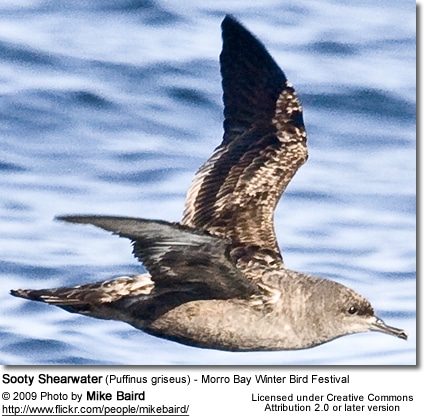
Breeding / Nesting
They breed in huge colonies and the female lays one white egg. These shearwaters nest in burrows lined with plant material which are visited only at night to avoid predation by large gulls.
Status
In New Zealand, about 250,000 mutton birds are harvested for oils, food and fats each year by the native Māori. Young birds just about to fledge are collected from the burrows, plucked and often preserved in salt.
Its numbers have been declining in recent decades, and it is presently classified as Near Threatened by the IUCN.
In 2009 the harvest reported record low catches, on average a trapping cage would yield nearly 500 birds, in 2009 the number was estimated to be closer to 40 per cage.


